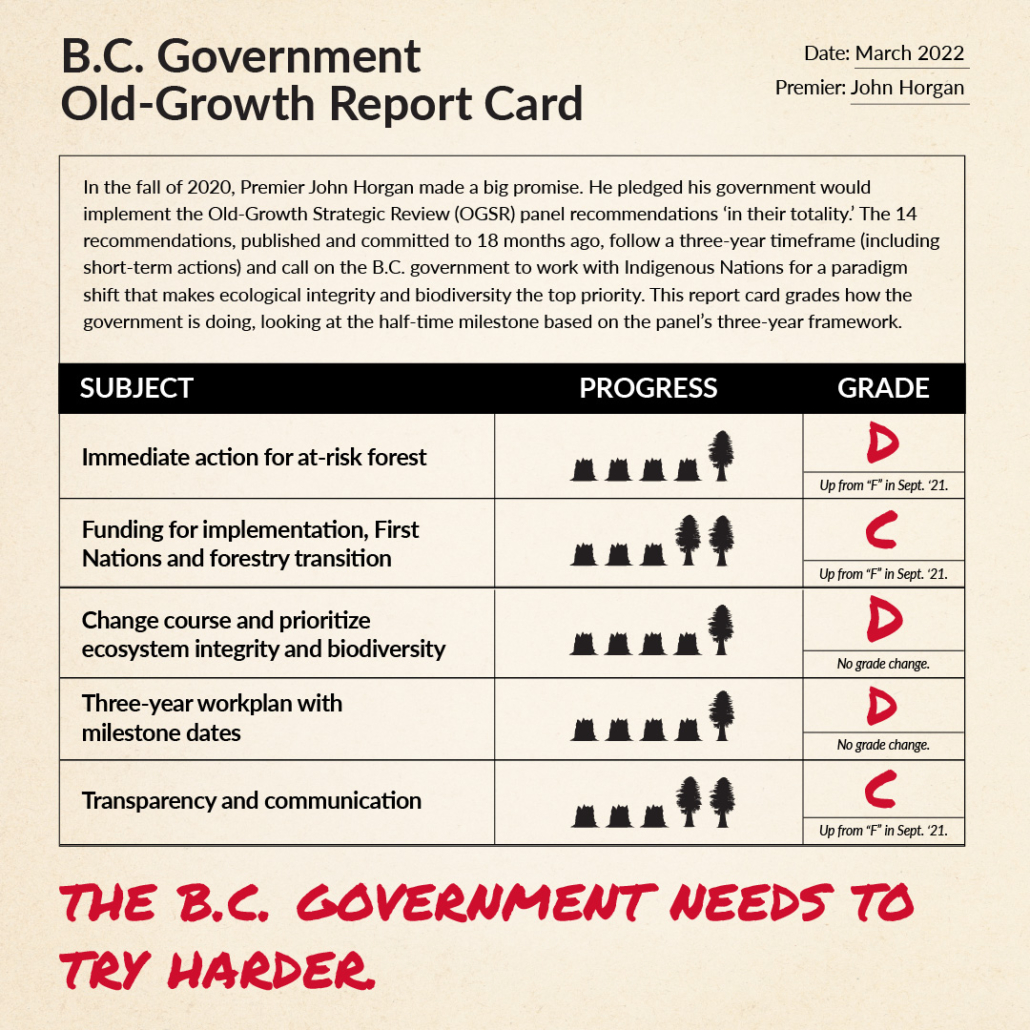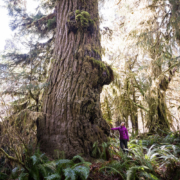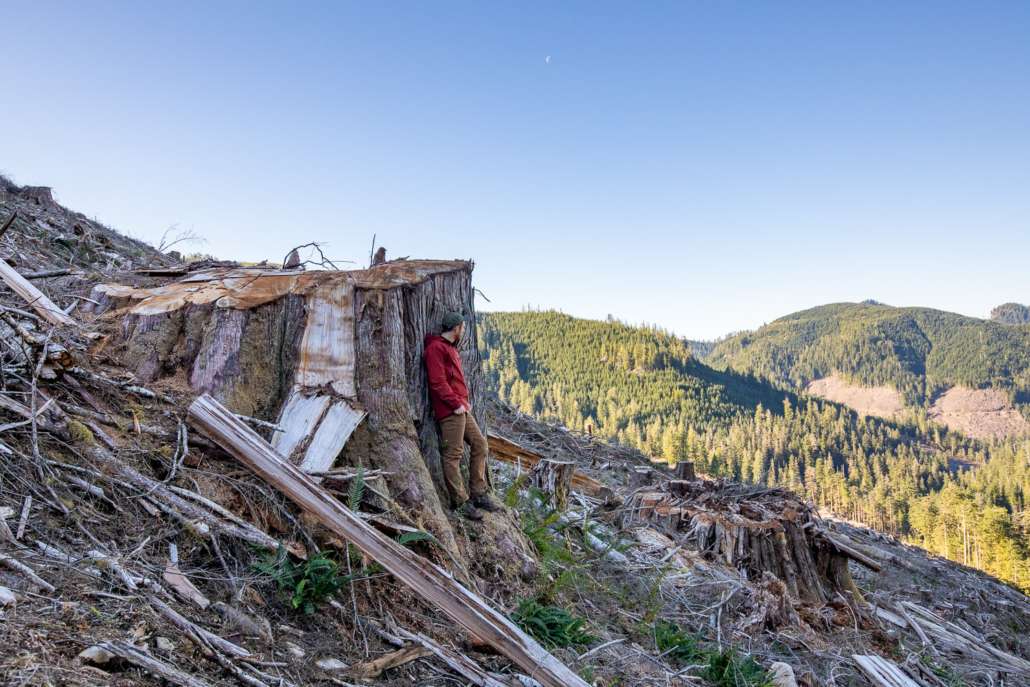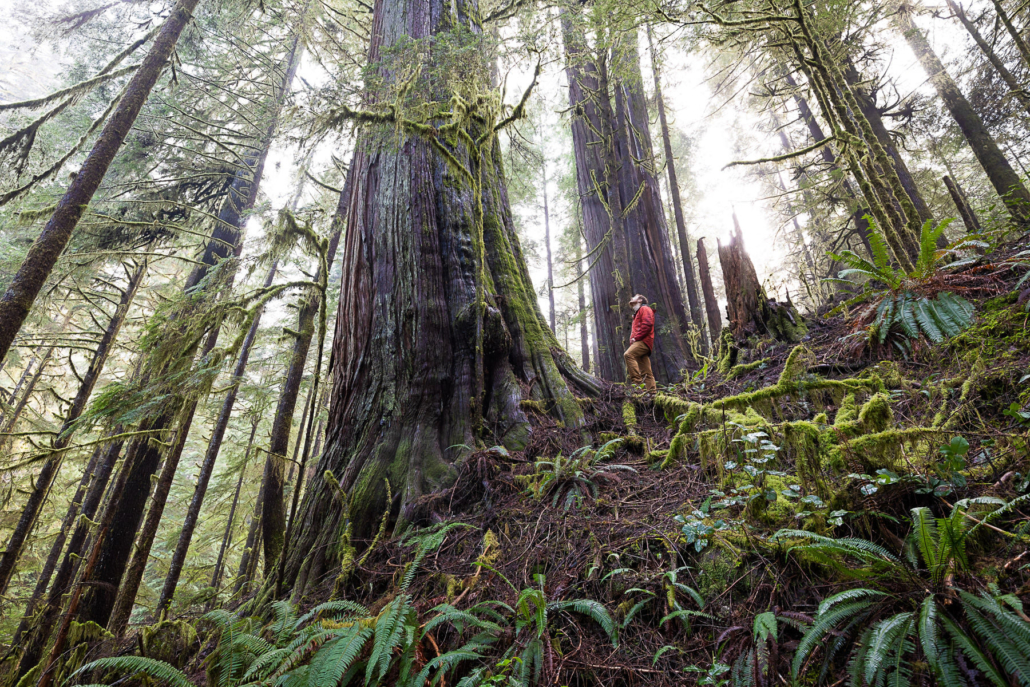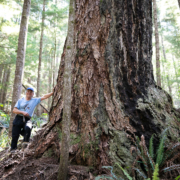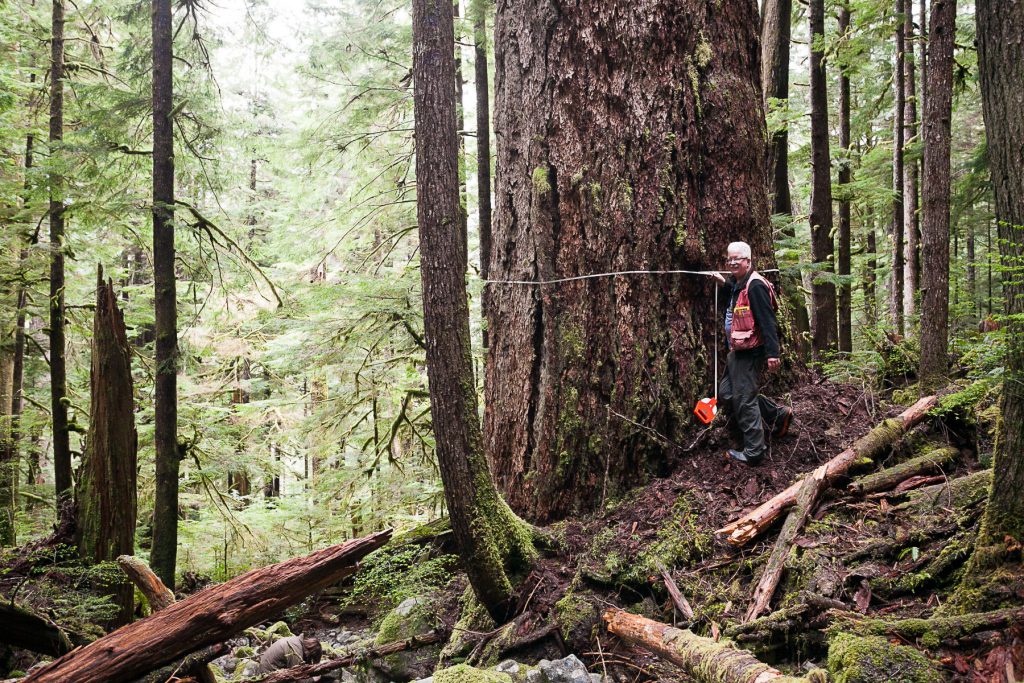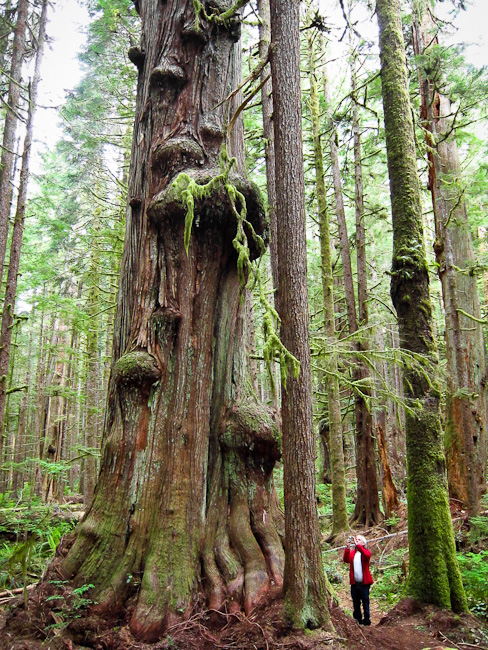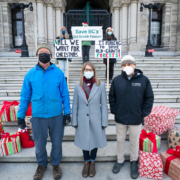Spin-filled Announcement Reveals BC Government’s Failure to Ensure Net Gains in Old-Growth Logging Deferrals
VICTORIA / UNCEDED LEKWUNGEN TERRITORIES – Yesterday the BC government released new and misleading statistics about old-growth logging on the one year anniversary of its science panel’s recommendations that logging should be deferred on millions of hectares of the most at-risk old-growth forests in BC. In November of 2021, the province’s independent science panel, the Technical Advisory Panel, recommended that the rarest, grandest, and oldest fraction of the remaining unprotected old-growth forests in BC, totalling 2.6 million hectares, be deferred from logging, while the province developed new management policies and legislation based on its Old-Growth Strategic Review panel’s recommendations.
Based on the BC government’s statistics (ie. the same ones they used last time), there has been no net increase in the deferred area since the BC government’s last official update in April, when they reported that 1.05 million hectares of the 2.6 million hectares (about 40%) recommended area had been deferred.
The implementation of the logging deferrals is contingent on the consent of local First Nations, whose unceded territories these are. However, the province has thus far failed to provide the critical funding for First Nations sustainable economic alternatives (to help develop such industries as tourism, clean energy, sustainable seafood, non-timber forest products, value-added second-growth forestry, etc) to offset and replace their reliance on old-growth timber revenues (in the form of logging tenures, joint venture agreements, and revenue-sharing agreements) that would make it economically feasible for most First Nations to support the deferrals and to protect old-growth forests. This funding process is known as “conservation financing”, and was undertaken in the Great Bear Rainforest and Haida Gwaii with a mix of funding from conservation organizations and the provincial and federal governments, and is currently underway in Clayoquot Sound, enabling significant protection levels for old-growth forests in those regions.
The lack of progress of any net gain in old-growth deferrals – the precursor to permanent, legislated protection – with still no announcement of vital provincial funding for First Nations sustainable economic development linked to the development of new protected areas, reveal’s the provincial NDP government’s efforts to contain change against the status quo of old-growth logging, while thousands of hectares of old-growth forests continue to fall each year.
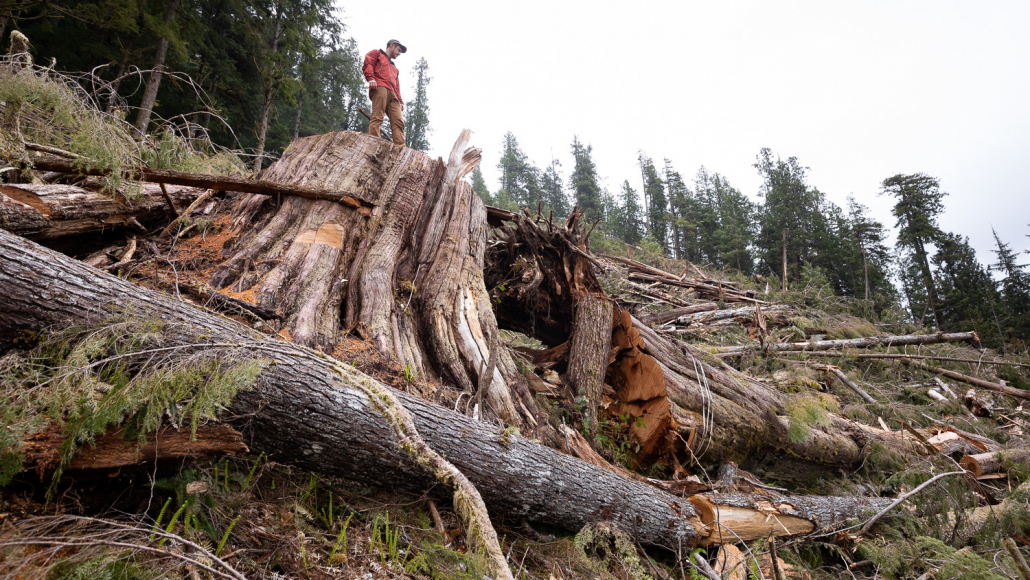
Ancient Forest Alliance Photographer & Campaigner, TJ Watt, stands on top of a freshly cut stump in an old-growth forest recommended for deferral on southern Vancouver Island, BC.
“The BC government for many months now has been backsliding on their old-growth commitments, working to delay, deflect and slow the momentum for significant policy change for old-growth forests, away from the ‘paradigm shift’ that they committed to in theory in 2020. Instead of changing their ways, they’re changing their PR again. David Eby, the new premier of BC, can veer away from the anti-environmental backsliding of the BC government. He has said he wants to speed up the implementation of the province’s old-growth plans when he takes the reigns soon. This will require major funding specifically for First Nations sustainable economic development and for private land acquisition, that is, a commitment of many hundreds of million of dollars from the province alone, which should be combined with other funding sources including federal and non-profit conservation funds. This is the key to speeding up both deferrals and to enabling the permanent protection of those forests – I can’t stress that enough. There can be no ‘paradigm shift’ without the funding, the key missing piece here”, stated Ken Wu, Endangered Ecosystems Alliance executive director.
Furthermore, the province seems to be returning to its old ways of undertaking major misleading PR-spin and sophistry in their press releases.
Their press release for example noted a decline in the amount of old growth logging between 2015 and 2021, from 65,500 to 38,300 hectares logged, but failed to mention that overall logging rates have declined across the province for well over a decade due to a diminishing timber supply from massive pine beetle kill and wildfires as a result of climate change (exacerbated by old-growth logging) and by old-growth logging itself (leaving lower volume second-growth stands behind and fewer jobs, a process known as the “falldown effect”), and failing to attribute how much of the decline has been due to the logging deferrals since the initial set of deferrals in 2020.

Old-growth logs are hauled out of the woods in 2022 on southern Vancouver Island, BC.
In addition, the province’s press release minimizes the amount of old-growth forests that are still at risk, stating “In total, approximately 80% of the priority at-risk old growth identified by the panel is not threatened by logging because it is permanently protected, covered by recent deferrals and/or not economic to harvest.” This figure is based on the province’s repeated, misleading use of the figure that 4 million hectares of the most at-risk old-growth forests remain, and that only 800,000 hectares are at risk of logging. However, they fail to mention the context of the original amount (a bread-and-butter tactic of their PR-spin), that there were once about 20 million hectares of such forests in BC (ie. the vast majority of the medium to high productivity old-growth forests have been logged where most forest giants grow), and that 1.4 million hectares of the remaining fraction was in pre-existing protected areas and forest reserves, much of it for decades, unrelated to province’s old-growth plan. In addition, their reference to old-growth forests that are “not economic to harvest” refers to about 700,000 hectares of at-risk old-growth forests that are largely outside the Timber Harvesting Land Base – but which get added in (ie. will still get cut) as old-growth forests are logged-out in adjacent areas, thus making previously uneconomic stands economic to then harvest (ie. being outside the Timber Harvesting Land Base is not secure nor a conservation designation).
Old-growth forests are vital to support endangered species, the climate, clean water, wild salmon, First Nations cultures, tourism and recreation. Old-growth forests possess distinctive structures, biodiversity, and functions that are not replicated by the ensuing second-growth tree plantations that they are being replaced with, which are re-logged every 50 to 80 years in BC, never to become old-growth again. Virtually all industrialized countries are now logging second and third-growth forests (eg. 100 year old not 1000 year old trees), as is much of the rest of Canada, and BC is one of the last industrialized jurisdictions that supports the large-scale commercial logging of old-growth forests.
“For over a decade now we have been telling successive BC governments that the only pathway forward for old-growth protection in BC is to provide conservation financing for First Nations communities and to implement a provincial land acquisition fund to protect private lands,” said TJ Watt of the Ancient Forest Alliance “Now, since we have not seen the necessary funding put on the table to offset lost revenues from forgoing logging, we are seeing the BC government failing to keep its own promises to protect our most at-risk forests. My before and after photos of giant old-growth trees standing and then cut reveal exactly what that looks like on the ground.”
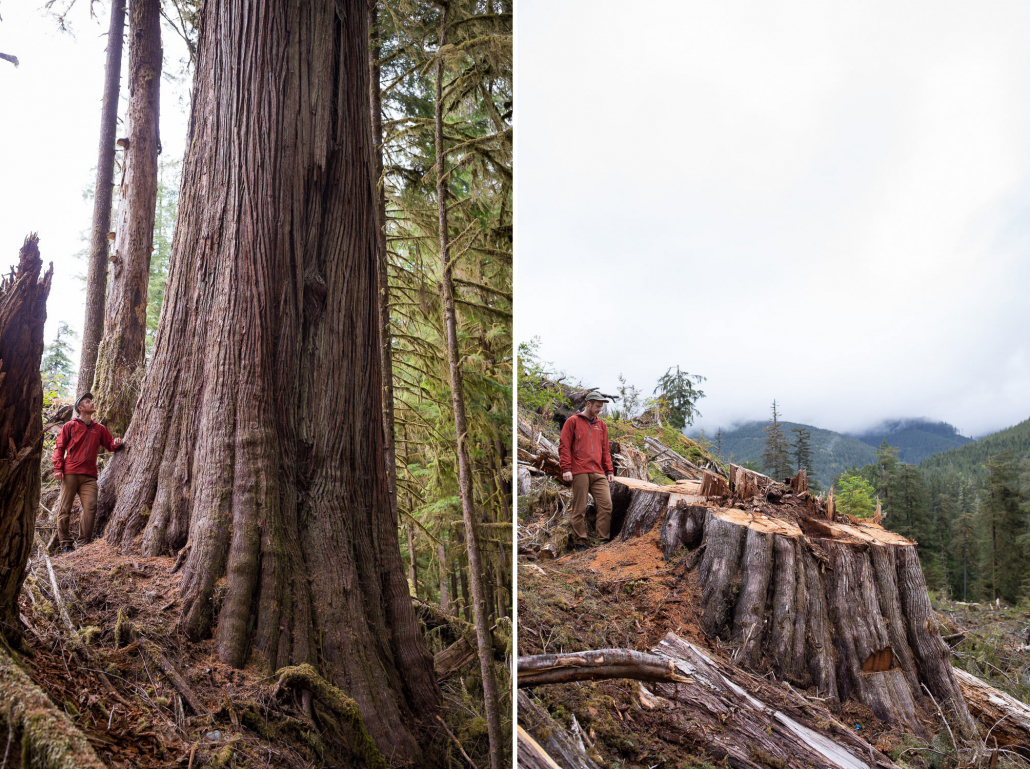
Ancient Forest Alliance Photographer & Campaigner, TJ Watt, beside a giant redcedar tree before and after it was cut in an old-growth forest recommended for deferral in the Caycuse watershed in Ditidaht territory on Vancouver Island, BC.
“The province seems to be returning to its ‘bad old days’ of terrible PR-spin and sophistry when it comes to the state of old-growth forests in BC, inflating the amount that remains and masking the amount at risk to deflect for their lack of progress in protecting them. It’s disingenuous for the province to somehow insinuate that the drop in old-growth harvest levels from 2015 are due to their policies – they weren’t even around in 2015 and it wasn’t until late 2020 when they committed to the Old-Growth Strategic Review panel recommendations – while total harvest levels have been dropping for about 15 years due to overcutting (ie. running out of old-growth from logging) and climate-change driven impacts of pine beetle and wildfires. Similarly, the classic spin of playing with statistics – of removing the context of how much has already been logged, and then cobbling together a variety of disparate and misleading categories to beef up the numbers of how much old-growth they’ve ‘saved’ signals that they are hiding their lack of progress and trying to contain change against the status quo of old-growth liquidation”, stated Ken Wu, Endangered Ecosystems Alliance executive director. “But with the political will and major new funding, with an incoming new leader, they can change this quickly. Let’s see what happens here.”
The Endangered Ecosystems Alliance and Ancient Forest Alliance have been working with the Nature-Based Solutions Initiative to help fund First Nations old-growth protection initiatives and to buy old-growth forests on private lands, a project known as the Old-Growth Solutions Initiative.

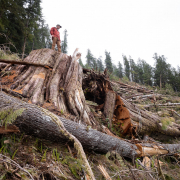
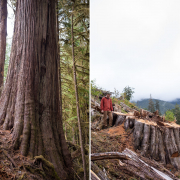

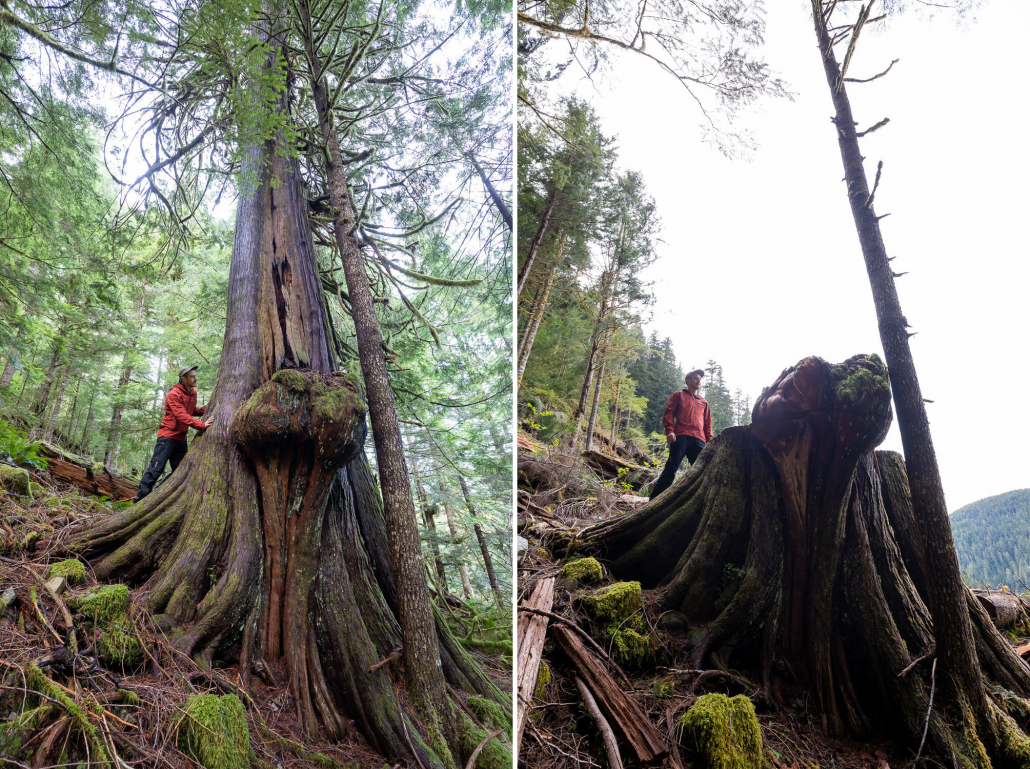
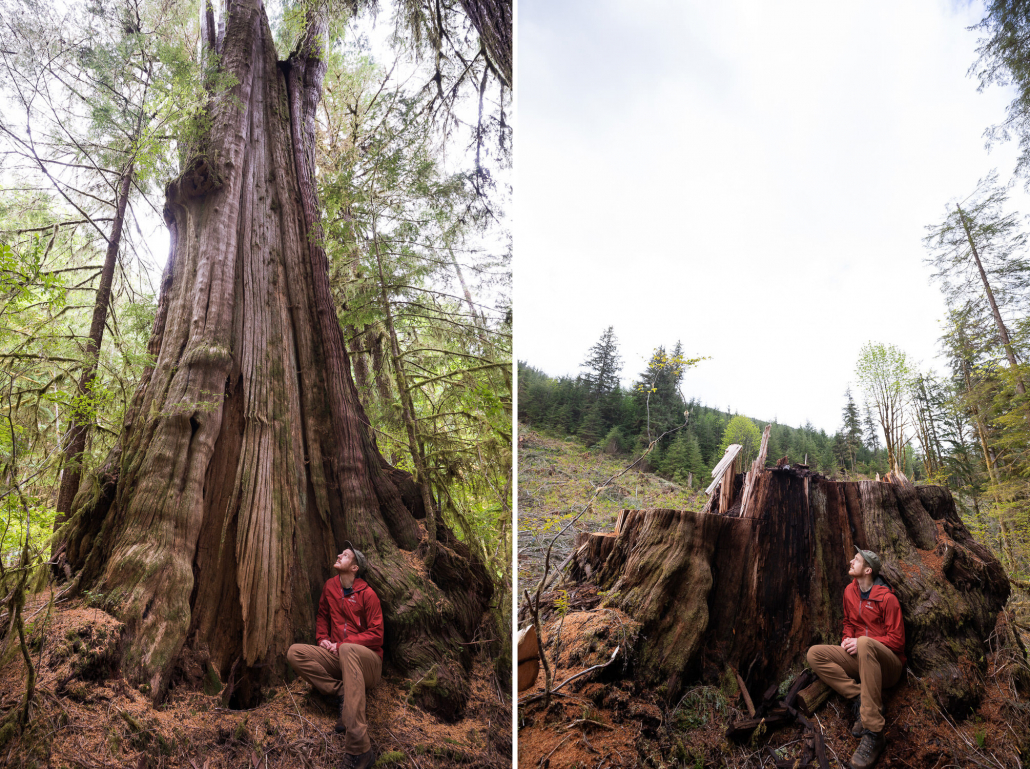
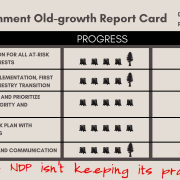
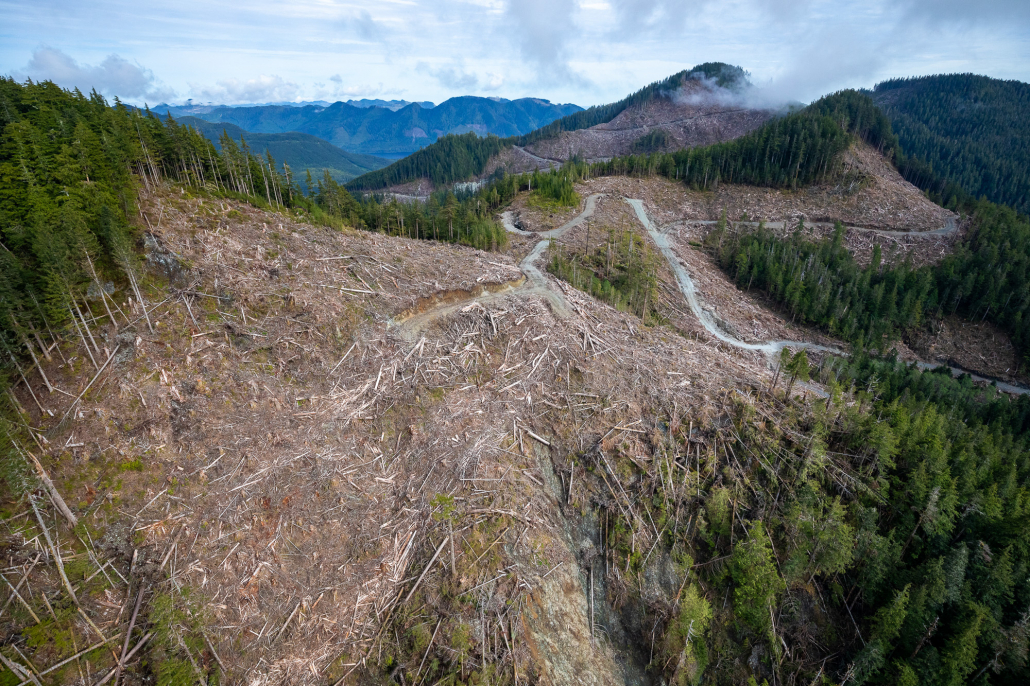

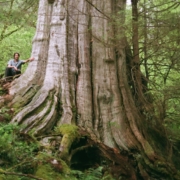
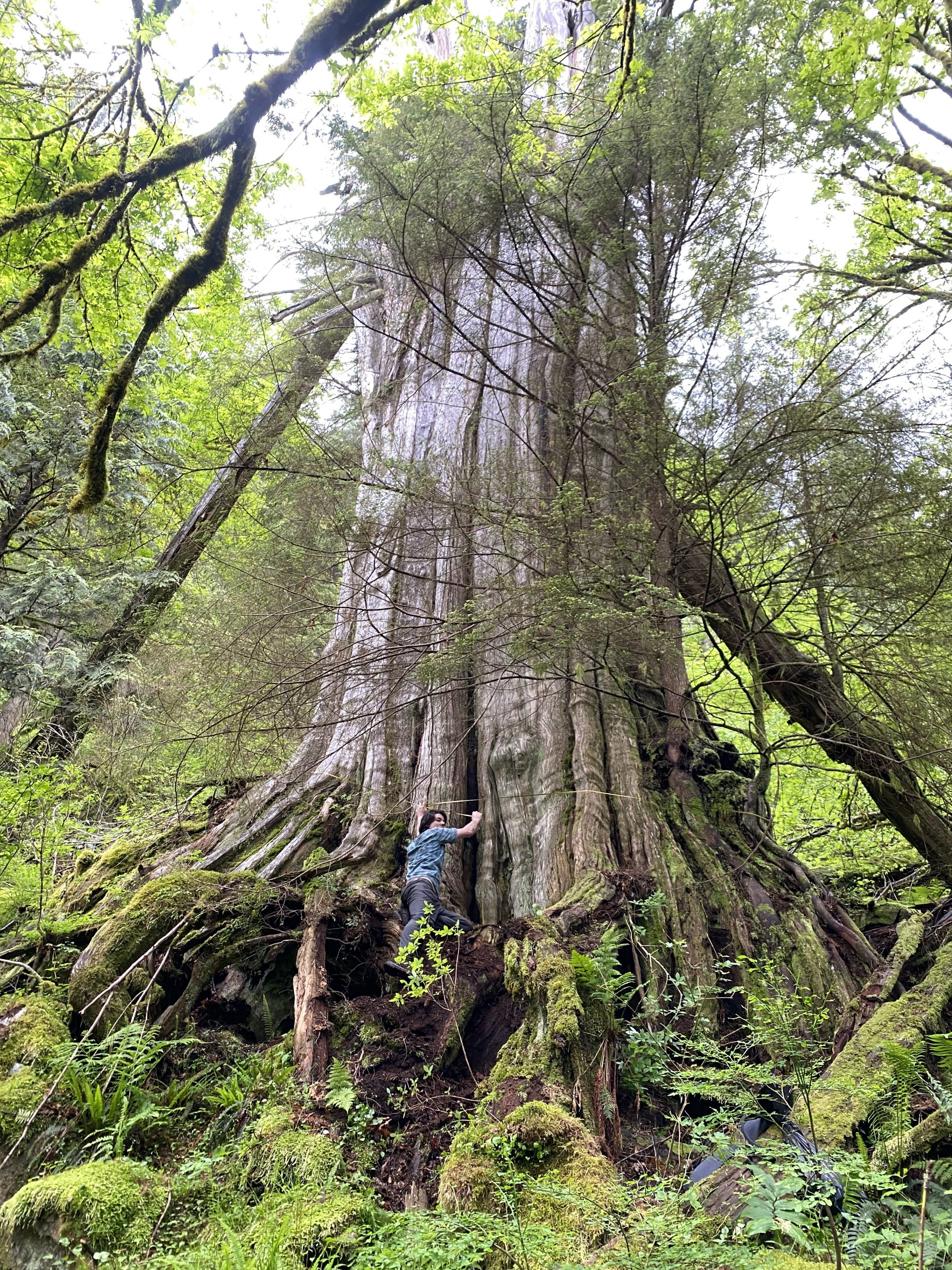
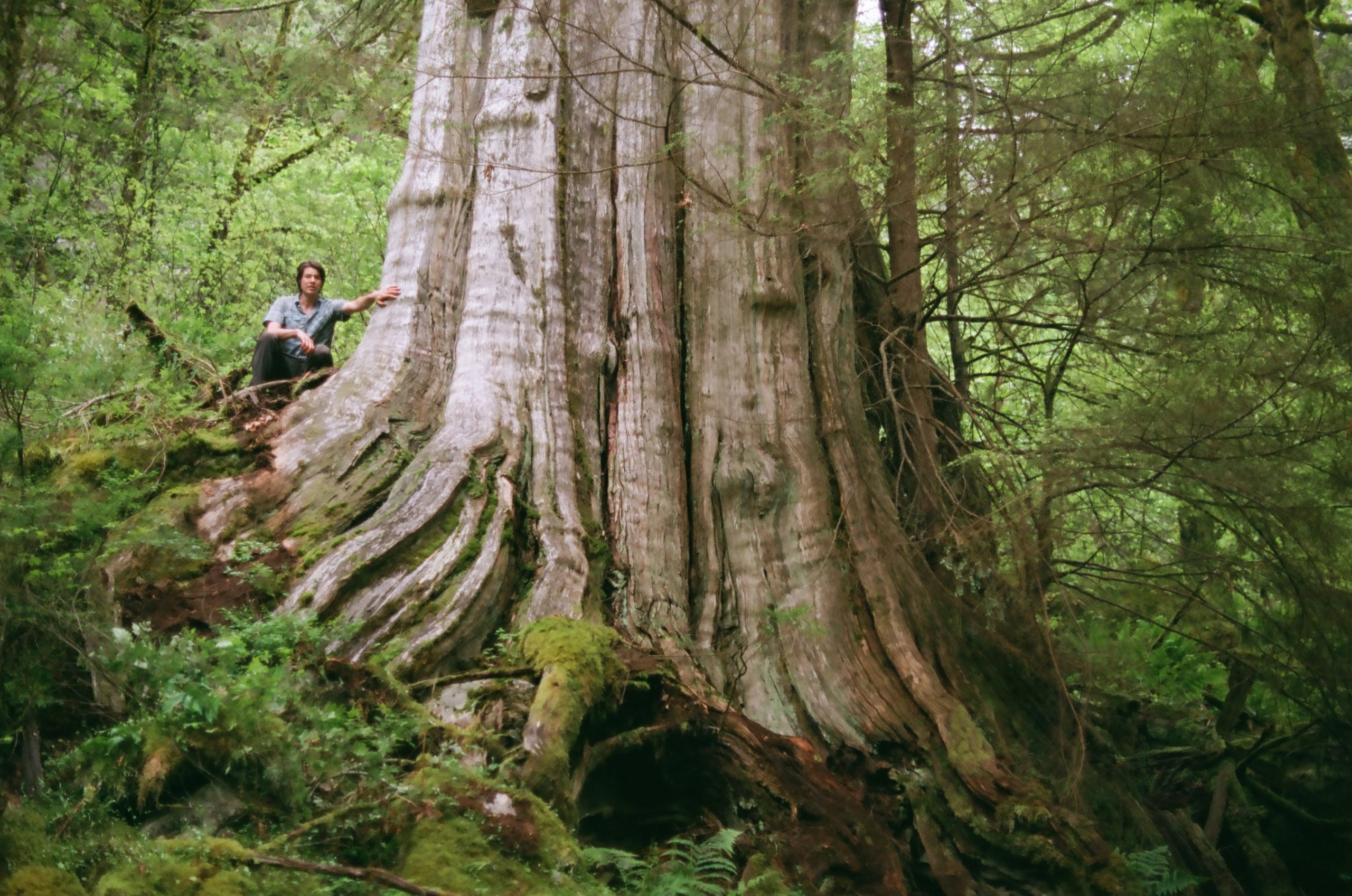
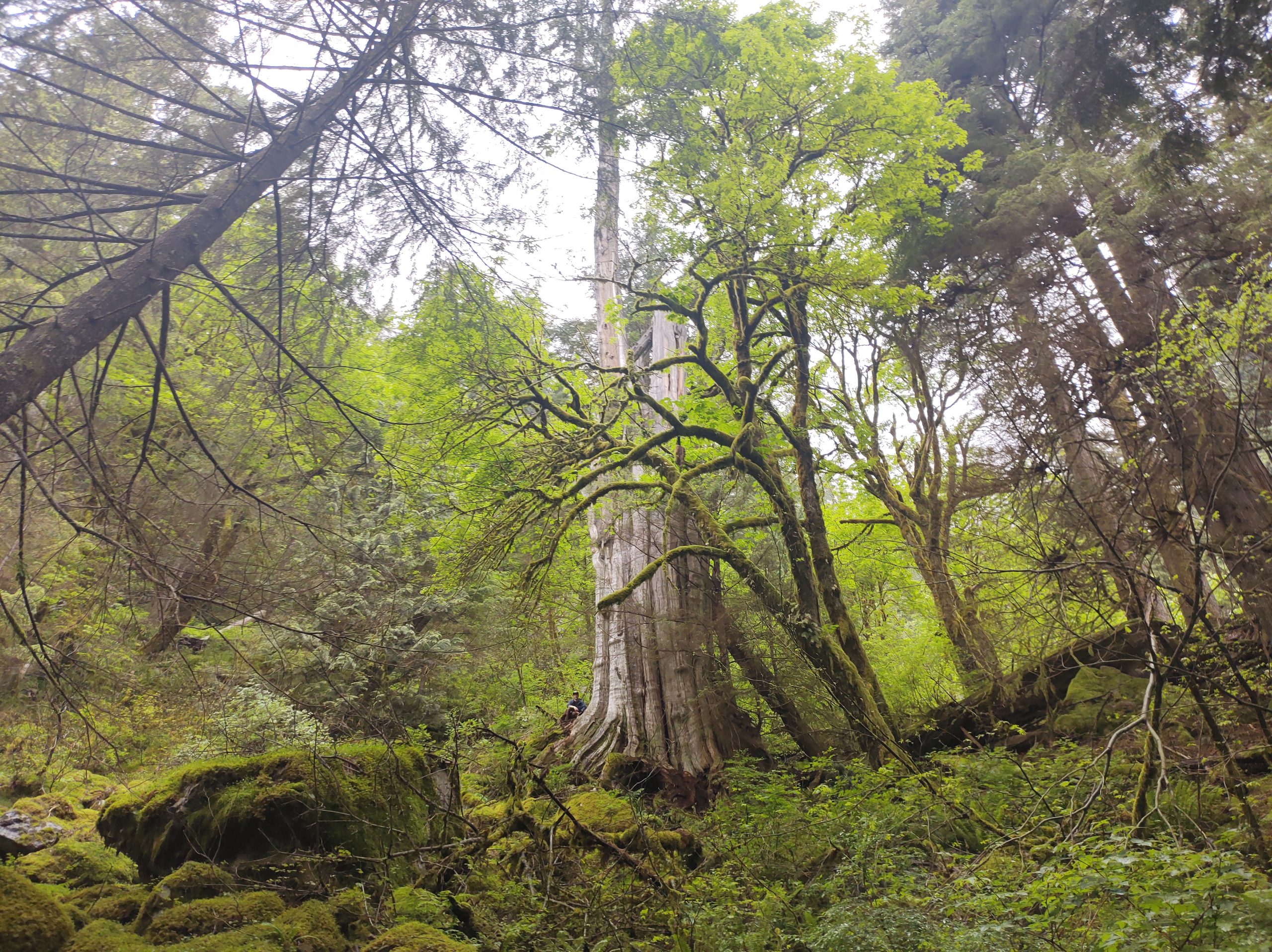
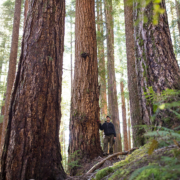
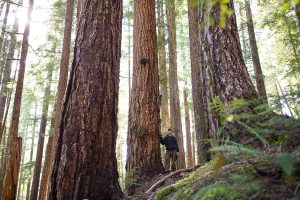 The company’s BigCoast Carbon Credits program will set aside the stands via a carbon credits program which will be certified under the Verified Carbon Standard. The company is expecting several hundred million dollars in carbon offsets funding over the next 25 years that will be equivalent to or exceed what their logging revenues would’ve been from logging these stands.
The company’s BigCoast Carbon Credits program will set aside the stands via a carbon credits program which will be certified under the Verified Carbon Standard. The company is expecting several hundred million dollars in carbon offsets funding over the next 25 years that will be equivalent to or exceed what their logging revenues would’ve been from logging these stands. Old-growth forests have unique characteristics not found in the ensuing second-growth tree plantations that they are being replaced with, and which are re-logged every 50 to 60 years on BC’s coast – never to become old-growth again. Old-growth forests are vital to support endangered species, the multi-billion dollar tourism industry, the climate, clean water, wild salmon, and First Nations cultures. Well over 90% of the high productivity old-growth forests with the biggest trees and over 80% of the medium productivity old-growth forests have been logged.
Old-growth forests have unique characteristics not found in the ensuing second-growth tree plantations that they are being replaced with, and which are re-logged every 50 to 60 years on BC’s coast – never to become old-growth again. Old-growth forests are vital to support endangered species, the multi-billion dollar tourism industry, the climate, clean water, wild salmon, and First Nations cultures. Well over 90% of the high productivity old-growth forests with the biggest trees and over 80% of the medium productivity old-growth forests have been logged.
